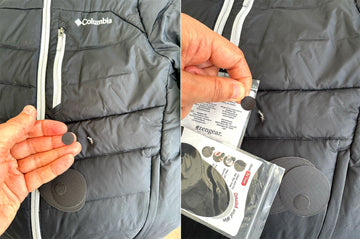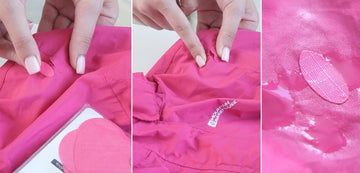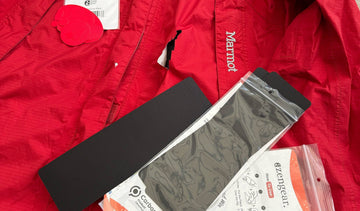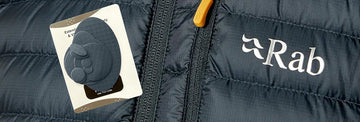What Is the Right Compression Level for Compression Socks
by Emily Jannet on Mar 29, 2022
If you're like most people, when you think of compression socks, the first thing that comes to mind is stopping leg cramps. However, compression socks can do a lot more than that!
But how do you know if your compression socks are providing the right level of compression? Keep reading for tips on how to find the perfect pair of compression socks for you!
When considering compression socks, it's important to keep in mind the socks' compression level. Socks with a higher compression level put more pressure on the legs, which can be helpful for people who have circulatory issues or who are pregnant. socks with a lower compression level are more comfortable to wear and are better suited for everyday activities such as walking or light exercise. No matter what the compression level, all socks should be comfortable to wear and provide the desired level of support. Choose socks that fit well and stay in place throughout the day for best results.
Levels of Compression Socks Explained
Compression clothing uses millimetres of Mercury (mmHg) when it comes to measuring the levels of compression (pressure). 1mm of mercury = 1/760 of an atmosphere of pressure. In science, the pressure is measured in Pascals (1 mmHg = 133.322367415 pascals); however, in medicine the standardised unit of compression level is measured in mmHg.
Compression Classes
While mmHg is a standardised unit of measure for the strength of compression, when it comes to classes of compression, there is no universal classification. There are two most common classifications (AFNOR and RAL) as well as the BSI classification.
The AFNOR standard comes from a French body for standardisation and normalisation (Association Française de Normalisation) and has the following break down of classes:
- Class 1: 10-15 mmHg (Very light compression)
- Class 2: 15-20 mmHg (Light compression)
- Class 3: 20-36 mmHg (Moderate compression)
- Class 4: 36+ mmHg (Strong compression)
The RAL standard comes from a German body and is generally used EU-wide:
- Class 1: 18-21 mmHg (Light compression)
- Class 2: 23-32 mmHg (Moderate compression)
- Class 3: 34-46 mmHg (Strong compression)
- Class 4: 47+ mmHg (Very strong compression)
The BSI standard comes from the British Standards Institute:
- Level 1: 14 - 17 mmHg (Light Compression for Active Use)
- Level 2: 18 - 24 mmHg (Moderate Compression for Active Use)
- Level 3: 25 - 35 mmHg (High Compression for Active Use & Recovery)
What Are Graduated Compression Socks?
Graduated compression socks are a type of stocking that helps to improve circulation and reduce swelling. They are often worn by people who have diabetes or other conditions that can cause poor circulation. Compression socks are also commonly worn by pregnant women and long-distance travelers.
These socks work by applying graduated compression, which is strongest at the ankle and gradually decreases up the leg. This helps to promote blood flow and prevent pooling of blood in the legs. compression socks are available in a variety of styles, including knee-high, thigh-high, and pantyhose. They can be purchased without a prescription, but it is important to consult with a doctor before wearing them to ensure that they are appropriate for your condition.
Ease Your Leg Pains
Compression socks are a great way to help ease your aches and pains, whether you have just come out of an injury or are dealing with chronic conditions like varicose veins. For people who suffer from severe shin splints pain 15-20 mmHg compression level can be helpful since it lessens any swelling while providing support where needed! For more severe leg pain or varicose veins, one might consider using 20-30mmHg or higher compression levels which might need to be prescribed by a doctor.
15-20mmHg stockings provide help relieving soreness when getting back into shape after slabbing down some heavy lifting at work (or play) as well as relief during postpartum recovery periods caused by maternal discomfort.
Great for Running
If you're looking for a way to make your runs more comfortable and less taxing on your body, compression socks may be the answer. They can help provide calf support, reduce leg swelling and muscle fatigue, all of which can lead to better performance and faster recovery times. Usually, for short runs, 15-20mmHg compression level is sufficient; for long-runs (half marathons, marathons), some runners prefer 20-30mmHg compression level to provide a good calf muscle support and help with recovery.
Conclusion
So how do you know if your compression socks are providing the right level of compression? The answer is, unfortunately, not always straightforward. There are a few things you can look for to help ensure that you’re getting the most out of your compression socks.
First and foremost, it’s important to make sure you’re wearing the correct size sock. If they’re too tight or too loose, they may not be providing the desired level of compression. Additionally, pay attention to how long you wear your socks each day – if you wear them for too long or too frequently, you may experience adverse effects such as fluid accumulation and skin irritation.





